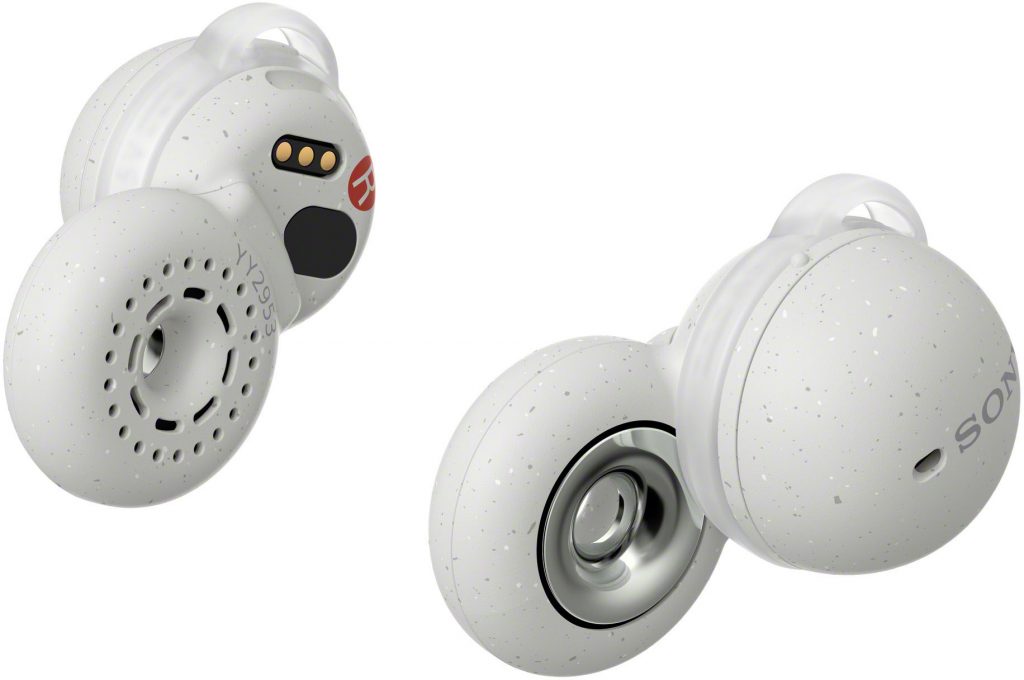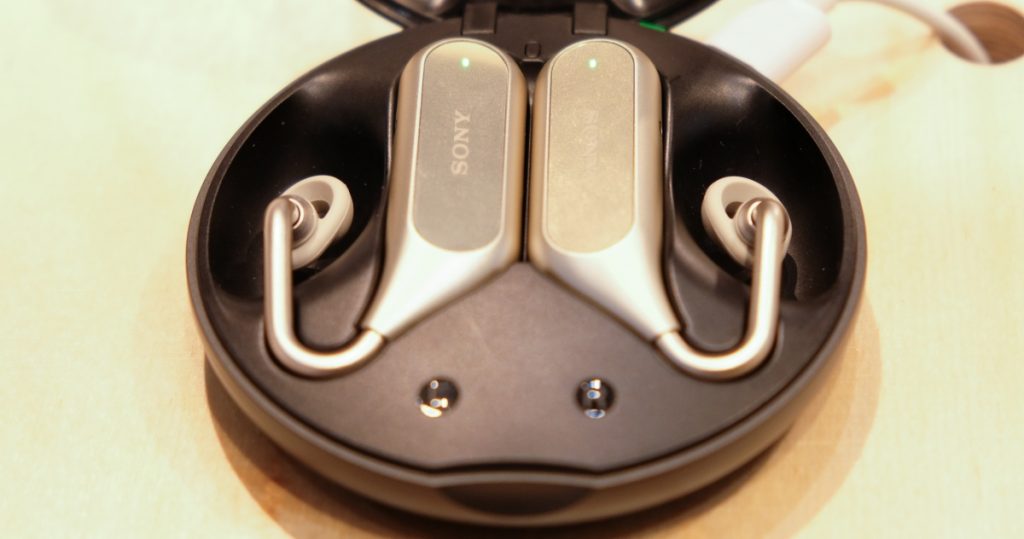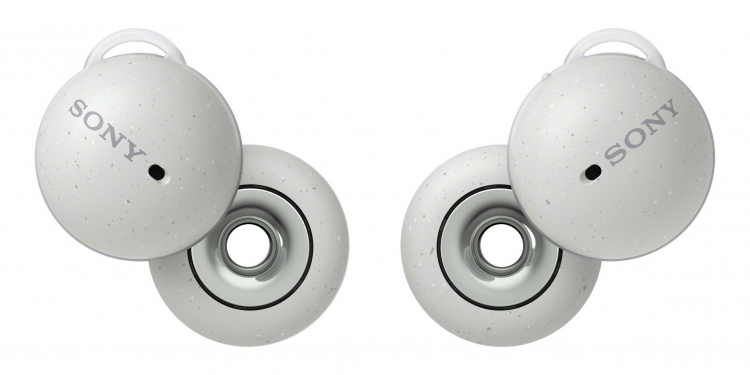@TechInsiderBlog has released images of what could be Sony’s upcoming successor to the Xperia Ear Duo. However, it looks like it has ditched the Xperia moniker and goes by Sony Linkbuds or WF-L900. The Linkbuds and Xperia Ear Duo are open-fit design earphones, which means you will be able to hear your surroundings while listening to audio like an open-back headphone. For this generation, it looks like Sony is taking a drastically different approach than it did 4 years ago.
The Linkbuds have an unconventional design compared to most earphones on sale. It consists of a spherical-like unit which houses the circuitry, that is connected to a wheel-like unit with a hollow centre which contains the audio drivers. There are no ear plugs or even ear tips to provide passive noise isolation, but according to @TechInsiderBlog, the earphones have active noise cancellation (ANC). However, ANC works best when there is good passive noise isolation, so it remains to be seen the effectiveness of ANC on the open-fit design Linkbuds.

From initial impressions of the design of the Linkbuds, the hollow centre in the speaker unit suggests that it could allow ambient sound to bleed into your ears creating an awareness of your surroundings.

So, what did the Sony Xperia Ear Duo bring to the table back then? For starters, when it was first revealed during Mobile World Congress (MWC) in 2018, many commented that it looked like a pair of hearing aids. It looked like that because The Xperia Ear Duo used a Spatial Acoustic Conductor housed in the main stainless-steel body to resonate the sounds created in the environment to the ear. Called the Dual Listening technology, it was developed in-house by Sony’s Future Lab Program. Sony’s pitch was to allow you to listen to audio while being aware of environmental sound, conversation and other ambient noises.

Other features included Sony’s Clear Phase audio tech, which would intelligently adjust the audio volume relative to the ambient noise. Along with the familiar touch controls, Sony also included motion gestures via an accelerometer and gyroscope. You could answer or hang up a call by nodding or shaking your head respectively. Additionally, you could choose to skip tracks with a quick head turn. It is not clear if Sony will port the motion gestures to the Linkbuds, but considering that this feature was kind of a gimmick because of the frequent false inputs, I would not hold my breath.
Reception towards the Sony Xperia Ear Duo leaned towards the negative side. The people who tried it found attaching it to the ear cumbersome because of its design. The audio quality took a hit as well because there was no sound isolation to help reproduce certain frequencies. As a result, bass and mid bass in the music were lost to the environment.
I've been using the Sony Xperia Ear Duo for almost two weeks and I'm still struggling to put them in. Here's my best attempt so far: pic.twitter.com/AVmooEzTvd
— James Peckham (@JamesRWP) June 22, 2018
Speaking about the environment, the earphones did a great job at keeping the user aware of what was happening around them. However, despite having the Clear Phase tech, in noisy environments like a bustling city or on a train, the volume of the ambient sound was louder than the maximum volume of the audio. Hence, it wasn’t enjoyable to listen to anywhere other than a quiet environment. Finally, the retail price of RM1,199 was just too steep to justify its shortcomings.
So, it looks like Sony is taking another crack at the open-fit earphones concept with the Linkbuds. Judging from the pictures alone, it looks easier to put on and take off thanks to a more compact design compared to the Xperia Ear Duo. As of now, there are no other details about the Linkbuds so take all this with a box of salt.








